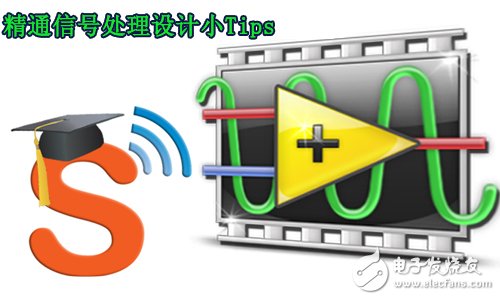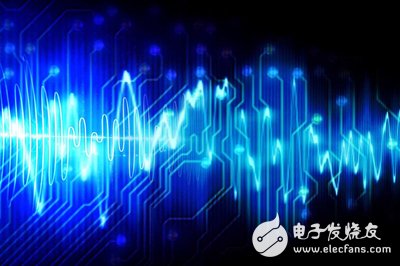The author, maxfiner, graduated from Xi'an University of Electronic Science and Technology with a master's degree in signal and information processing. Maxfiner has worked in the wireless communication department of Huawei Communication Technology Co., Ltd., and has many years of experience in engineering project development. It also has algorithm theory research, simulation verification, and corresponding hardware design implementation capabilities. It has practical experience in all aspects of communication physical layer development and design. .

 
This article is the first lecture "Proficient in Signal Processing Design Small TIps (1): Signals and Information" .
As the five traditional industries in the world (energy, steel, automobile, agriculture, telecommunications), telecommunications has been showing a vigorous development trend compared with the other four industries. Its core technology is related to electricity. The disciplines related to electricity are probably divided into communication engineering, electronic engineering, computers, electromagnetic fields and electromagnetic waves, microelectronics, power, industrial automation and many other directions.
Regarding the research and application fields of electricity, there are usually strong and weak electricity. Roughly, electricity, power grids, and electric power are basically in the field of strong electricity. Communication and computers belong to the field of weak electricity. We have seen that some companies, called certain electronic technology companies, or information technology companies, are basically in the category of weak electricity. If it is called certain electrical, it is basically a category of strong electricity, such as General Electric.
Now we are devoted to a branch of the weak current field - signal and information processing and application implementation. This is a direction of the electrical engineering profession, often juxtaposed with another direction, namely circuits and systems. Regarding the use of signal and information processing in the end, how to reflect in the specific practice, you can refer to the article " Signal and Information Processing in My Eyes ". I often encounter such a problem: what is the difference between the signal and the information, and what is the connection. How do they show up in specific applications? Based on my rough understanding and personal experience, try to do some analysis and comparison.
Signals are more of a physical category and are usually expressed in two ways, one is electromagnetic waves in space, and the other is voltage or current on a circuit. In the current daily life, one of the most cited cases of the word "signal" is the following sentence: My cell phone signal here is not very good. The signal at this time is embodied in the form of electromagnetic waves. One concept that is closely related to the signal is noise. The signals in the physical world are mixed and noisy, and the ideal signal without interference is only reflected in the theoretical analysis of textbooks. The greater the ratio of noise to signal, the worse the signal quality, the less easily the signal is detected and the less likely it is to be identified and discerned. In this regard, the professional term is called signal-to-noise ratio, which is a very important concept in signal processing. The detection of signals in noise is a theoretically strong subject direction. The terminology is called signal detection and estimation, sometimes called statistical signal processing.
Another form of signal is voltage or current. Engineers who are engaged in hardware circuit design will have a deeper understanding. Especially when observing a node of a circuit with an oscilloscope, you can see square waves, sawtooth waves, sine waves, etc. Various signal forms, which are also an embodiment of the signal.
So what is the information? Relative to the signal, the distance from the physical implementation of the circuit layer, the information belongs to a higher level, belonging to a relatively abstract concept. Simply, the signal can be considered as the carrier of the information. The information is the content or meaning of the signal, and the specific meaning is completely determined by the person. For example, the massive data in the hard disk, when reading the data in the hard disk, the signal is represented in the high and low level waveforms on the circuit trace, the level of the high or low represents 0 or 1 bit, this high and low sequence, Can represent a piece of MP3 music, can also represent a picture, can also represent a text file containing a novel. The signal is represented by a sequence of high and low frequencies transmitted in the hard drive data line on the computer motherboard. Information is embodied in the form of music, pictures, texts, etc.
For engineers in communications engineering or electrical engineering, signals and information may be dealt with. For computer software engineers, the basics are mainly dealing with information, and there are not many opportunities to deal with signals. Because software engineers' processing objects, such as variables, arrays, structures, linked lists, objects, etc., are basically representations of information and data. The signals that walk inside the computer circuit are basically obscured by the CPU and the operating system.
Signal processing in signal and information processing is more about digital signals than voltages, currents, or electromagnetic waves in space. This signal is the result of sampling the analog signal. Usually sampling at equal intervals. Equally spaced divisions in the time dimension—often called sampling, are equally spaced in magnitude—often called quantization. Strictly speaking, a signal that is only sampled in time is called a discrete signal, and is quantized in amplitude to be called a true digital signal. This digital signal is analyzed and processed, which is called digital signal processing, referred to as signal processing. Specific forms are spectrum analysis, Fourier transform, digital filtering, and the like.

So, what is the difference between information processing and signal processing? Let's take the application as an example for explanation. For example, the fingerprint recognition of an Apple mobile phone is a typical information processing. The analog form of the signal captured by the fingerprint sensor is sampled into a digital digital signal by the AD conversion device, and the fingerprint information is discriminated by a well-designed classification and recognition algorithm to determine whether the current fingerprint belongs to the owner. Information processing. This belongs to identification and classification and is a major application of information processing. Another big application is to search, find interesting content in massive information and data. This is the main work of Baidu and Google, and also belongs to the category of information processing. The original voice has a large amount of data, the original digital image is bigger, and the digital video is even more amazing. Whether it is storage or transmission, it is very troublesome and not worthwhile. What should we do? Develop a set of algorithms that can reduce the amount of data in voice, image, and video by hundreds of thousands of times without compromising the senses and allowing for small distortions, based on the redundancy of the data itself. The compression of information, which is also a major application of information processing.
In a rough example, I talked about the difference and connection between signal and information, as well as the corresponding signal processing and information processing, hoping to clarify some people's confusion. Subsequent opportunities have to share the specific principles of signal and information processing and applications in areas such as communications.
The next issue is to speak - proficient in signal processing design small TIps (1): What is the use of mathematics? How useful is it? Please stay tuned!
Disclaimer: Electronic enthusiast network copyright, declined to reprint!
Front Screen Glass Lens For Iphone
Glass Cover For Iphone,Front Screen Outer Glass Lens,Glass Cover With Oca,Glass Cover For Touch Screen
Shenzhen Xiangying touch photoelectric co., ltd. , https://www.starstp.com
